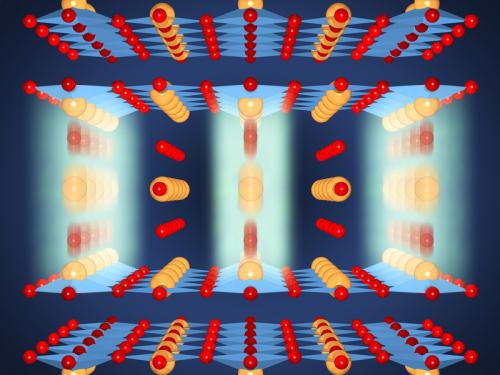Beijing December 11 news, according to physicists' organization website, superconductivity is a miraculous nature: superconductors can transmit current without any resistance, so there will be no power loss. In some cutting-edge fields, this technology has begun to be applied, such as acting as a magnet in nuclear spin tomography devices or particle accelerators. However, for superconductivity, superconducting materials must be cooled to very low temperatures. But just last year, an experiment made a breakthrough in this area.

Researchers have successfully fabricated ceramic superconductors at room temperature for the first time with short-wave infrared laser pulses to irradiate yttrium-copper oxide (YBCO)—though it lasts only a few microseconds per microsecond.
With the help of short-wave infrared laser pulses, researchers for the first time successfully fabricated ceramic superconductors at room temperature—although they lasted only a few microseconds in microseconds. An international team of the Max Planck Institute for Materials Structure and Dynamics in Germany recently reported their work in the journal Nature. The team believes that the principle behind this phenomenon is that laser pulses cause transient changes in individual atoms in the crystal lattice, leading to superconductivity. This achievement will hopefully help existing low-temperature superconducting materials to achieve superconductivity at much higher temperatures, and therefore has a wide range of application prospects.
Initially, scientists discovered that a few types of metals showed superconductivity in extremely low temperature environments where the temperature was only slightly above absolute zero. Later, in the 1980s, physicists discovered a new type of ceramic material that can achieve superconductivity in the environment of minus 200 degrees Celsius and is therefore called "high-temperature superconductor." One of these ceramic materials is yttrium barium copper oxide (YBCO). This is one of the most promising superconducting materials, and it may be applied to superconducting cables, motors and generators in the future.
The crystals of beryllium copper oxide have a very special structure: the two-layered copper oxide layer is superposed with a layer of slightly thicker intermediate layers of germanium, copper and oxygen atoms to form a crystal. The superconductivity of this material comes from the two-layered copper oxide layer. Electrons can be combined here to form so-called "Cooper pairs".
This pair of electrons can traverse between different layers, which means that these electron pairs can pass through the level like ghosts and are not blocked - this is a typical quantum phenomenon. However, this crystal structure also shows superconductivity only if it is lower than the “critical temperature†because only under these conditions will the electrons form Cooper pairs, and not only within the double-layered copper oxide layer. Crossing, but also through the thicker middle layer. When the temperature is higher than the critical temperature, the electron's Cooper pair disappears, and the material changes back to a poorly conductive metal composite.
Helps develop new superconducting materials
In 2013, an international team of researchers from a Max Planck Institute found that when infrared laser pulses were used to irradiate cerium-copper oxide materials, they exhibited transient superconductivity at room temperature. It is clear that the laser pulse changes the coupling of the double copper oxide molecules in the crystal structure of this material. However, the more precise reason remains unclear—until the research team had the opportunity to travel to the United States to use SLC's linear accelerator coherent light source (LCLS), the world's most powerful X-ray laser, to analyze the problem. .
The German physicist physicist Roman Mankowsky (Roman Mankowsky) is the first author of this "Nature" paper. He said: “First of all, we again irradiate the material with infrared pulsed lasers, and we see that some of these atoms start to vibrate. After a short time, we used short X-ray pulses to measure the exact lattice structure of the excited crystal. â€
The result of this is to find that the infrared pulse not only excites and causes atoms to vibrate, but also actually causes the atoms to migrate and leave the original position. This results in an increase in the thickness of the copper oxide bilayer by 2 picometers (1 picometer = 1 trillionth of a meter), or about one-half of an atom diameter, and the middle layer between them. The thickness is correspondingly reduced. This change enhances the coupling effect between the two bilayers, resulting in a transient superconductivity of the crystal structure at room temperature.
On the other hand, this latest research result has also helped to improve the theory of high-temperature superconductors that are still not yet perfect. Mankiwski said: "This achievement will help material scientists to develop superconducting materials with higher critical temperatures and finally realize the dream of using superconducting materials that can be used at room temperature without cooling at all." , Superconducting magnets, motors or motors must be cooled with liquid nitrogen or liquid helium during application. If this complex cooling process is no longer needed, it will mean a key technological breakthrough in this area.
Hang net,Hang net price,Hang net product
Jiangsu Zhongyi Work Rigging Co., Ltd. , https://www.zy-rigging.com
